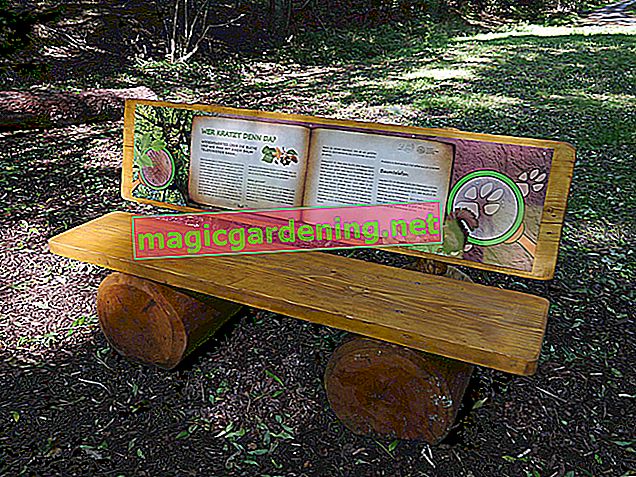
Beeches have a heart root
- Heart root
- Shallow roots
- pronounced root system
The shape of the root of a beech tree is called the heart root. It forms a strong central part that grows downwards. Many secondary roots develop on the sides, which overcome many meters over the years. They run relatively flat underground.
also read
- Everything about the size of a beech tree
- In which location does the beech grow best?
- How high is the growth of a beech per year?
The root system expands so much that it is not necessary to fertilize an older beech tree. Only young beech trees need occasional fertilizers at first.
Old beeches cannot be replanted
It is not advisable to replant an older beech tree. Over the years it has formed such a pronounced root system that it is not possible to get the roots out of the ground undamaged. The beech would die from transplanting.
With a bit of luck, young beeches can still be replanted if the roots have not yet spread as much.
When removing a beech, it is not enough to just saw the beech. The roots must also be carefully dug up. Otherwise the root remains will sprout again.
Maintain sufficient planting distance
Since the side roots of a beech tree are only about 50 to 70 centimeters underground, they pose a danger to masonry, roads and supply lines.
The roots become very strong over time, damaging buildings and walls, lifting paving slabs, and crushing water pipes and other pipes.
When planting the beech, a sufficient planting distance should therefore be maintained, which is ideally around 15 meters.
The roots of the beech do not tolerate waterlogging
Beech roots are sensitive. They can only spread unhindered in loose soil without compaction.
The soil must always be slightly damp. Under no circumstances should the roots dry out. Waterlogging is even more harmful. A short time is enough for the roots to rot with moisture.
Tips
Hornbeams also have a heart root. In contrast to the beech, they have very deep roots, so that they can easily be placed close to walls, roads and supply lines.








